
Hokkaido isn’t just Japan’s northern frontier—it’s a land of volcanic valleys, snow-capped peaks, and hot springs that have lured travelers for centuries. Beyond the ski slopes and lavender fields, the island hides some of the country’s most enchanting ryokans (traditional inns), where steaming onsen baths, multi-course kaiseki feasts, and tatami-lined rooms offer a deep dive into Japanese hospitality.
This isn’t just about a place to sleep. These ryokans are gateways to Hokkaido’s soul—whether perched above sulfurous “Hell Valley,” nestled in a maple-filled ravine, or overlooking the Pacific. Each one blends luxury with tradition, ensuring every soak, meal, and sunrise feels like a ritual.
Ready to unwind in healing waters, feast on the island’s famed seafood, and sleep on futons softer than clouds? Here are five extraordinary ryokans that promise more than just a stay—they promise an experience.
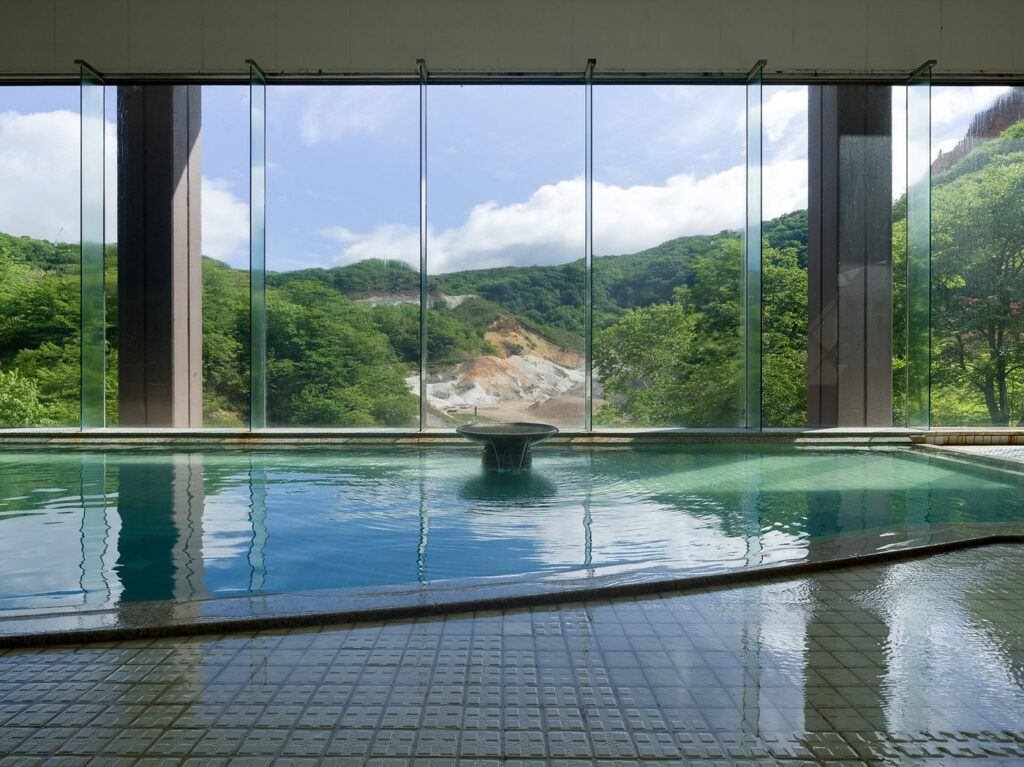
Steeped in over 160 years of history, Daiichi Takimotokan reigns as Noboribetsu’s most iconic hot spring retreat. Perched on the edge of Jigokudani (Hell Valley), this sprawling ryokan harnesses the valley’s volcanic energy to feed its 35 therapeutic baths, where milky-blue waters and sulfur steam create an otherworldly soak.

Why Stay Here?
- Onsen Heaven: Bathe in sulfur, iron, and radium-rich springs, including the legendary Kashou-no-yu cave bath, where mineral deposits cling to mossy rocks. Open-air pools offer views of the valley’s swirling vapors.
- Feast on Hokkaido’s Bounty: Multi-course kaiseki dinners showcase snow crab, sea urchin, and wagyu beef, while breakfast features miso soup made with onsen water.
- Rooms with a Story: Choose between traditional tatami suites or modern rooms with private open-air baths (opt for a valley view to watch sulfur vents puff at dusk).
- Beyond the Baths: Explore the in-house onsen museum or take a short walk to Jigokudani’s boardwalks, where steam rises from neon-orange pools.
Good to Know:
- The sheer size means it can feel busy—aim for early morning or late-night baths for tranquility.
- English signage is limited, but staff are warm and helpful.
Perfect For: Onsen traditionalists and those seeking a quintessential (but large-scale) ryokan experience.
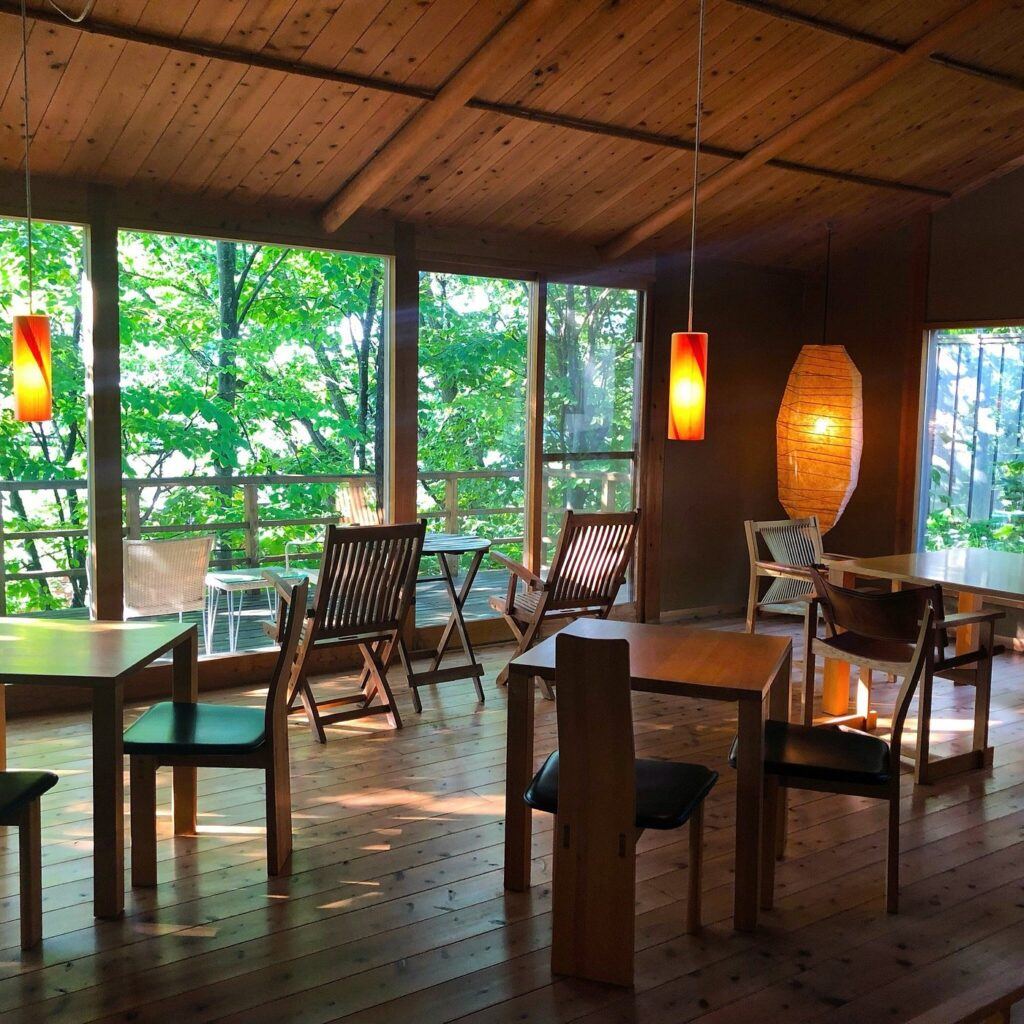
A 40-minute drive from Sapporo, Suizantei is a serene escape in the Jozankei hot spring valley, where emerald forests and a rushing river frame this intimate ryokan. Unlike Hokkaido’s mega-resorts, Suizantei focuses on private luxury, with just 25 rooms, each offering open-air cedar baths fed by sulfuric springs.
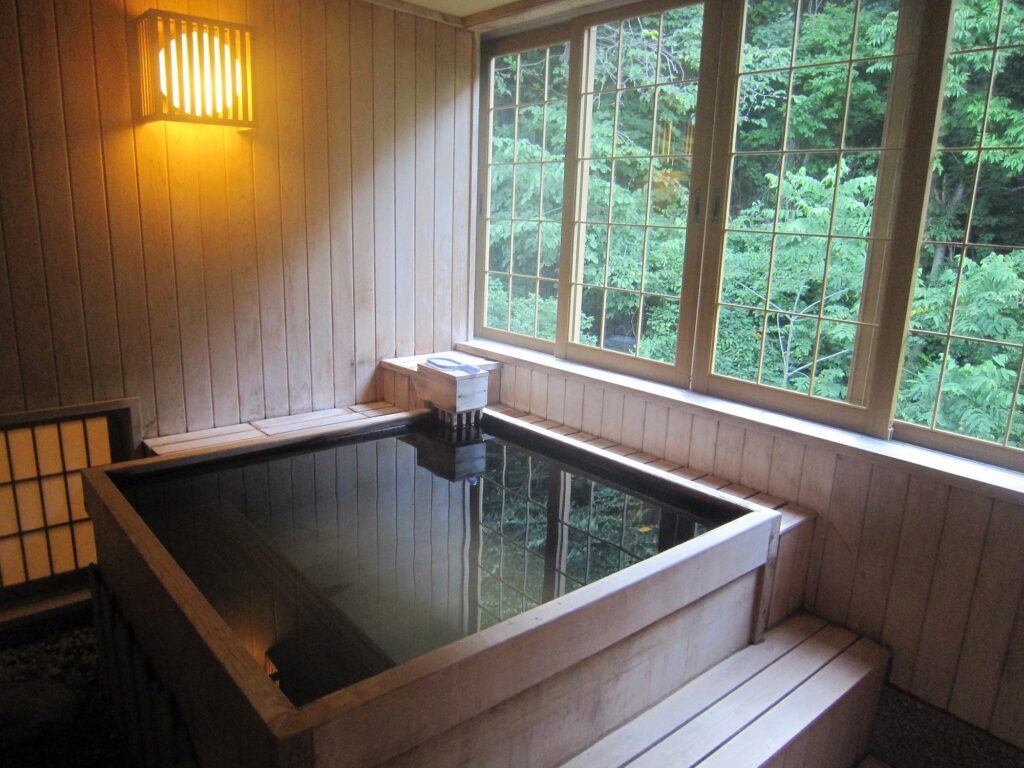
Why Stay Here?
- Bathing in Nature: Soak in your room’s private onsen (some suspended over the river) or book the secluded “Komorebi” outdoor bath, hidden in a grove of maple trees.
- Kaiseki with a Twist: Dinners highlight Hokkaido seafood like hairy crab and scallops, served in a lantern-lit dining room or in-room for ultimate privacy.
- Design with Soul: Rooms blend modern minimalism (think washi paper screens and low-platform beds) with traditional touches like irori sunken hearths.
- Seasonal Magic: Visit in autumn when the valley erupts in red maples, or winter when snow muffles the forest.
Good to Know:
- The ryokan is adults-only, ensuring tranquility (no splashing kids!).
- Shuttle service from Sapporo Station can be arranged.
Perfect For: Couples and solitude-seekers who want nature without sacrificing luxury.
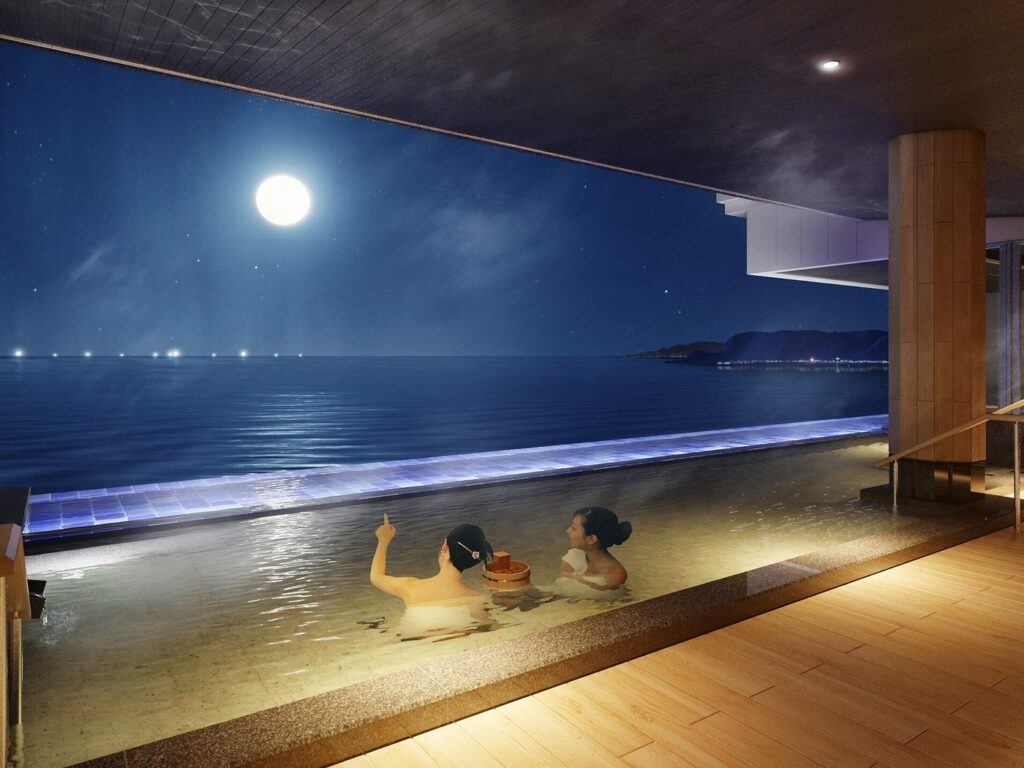
Where hot springs meet the sea, Umi to Akari redefines coastal relaxation. This sleek ryokan in Hakodate’s Yunokawa district pairs infinity-edge onsens overlooking the Tsugaru Strait with minimalist design inspired by wabi-sabi.
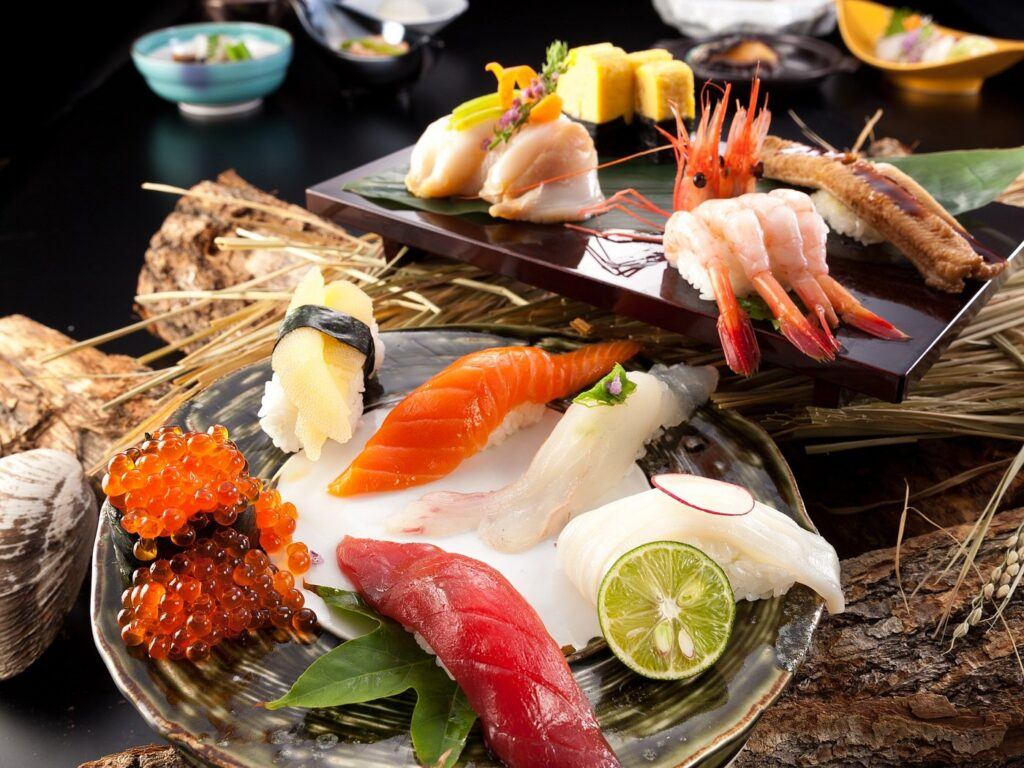
Why Stay Here?
- Baths with a View: The “Umi no Yu” outdoor pool blends seamlessly with the ocean horizon—especially surreal at sunset.
- Seafood Feast: Dinners spotlight Hakodate’s famous squid, ikura (salmon roe), and kaisen don(seafood rice bowls).
- Zen Vibes: Rooms feature driftwood art, shoji screens, and balconies facing the sea. Book a suite with a rooftop onsen for stargazing soaks.
- Local Flair: Borrow the ryokan’s bicycles to explore nearby Goryokaku Fort or Hakodate’s morning market.
Good to Know:
- Oceanview rooms cost extra but are worth it for the wake-up views.
- The onsen water is gentle (low sulfur), ideal for sensitive skin.
Perfect For: Design lovers and seafood enthusiasts craving a stylish twist on tradition.
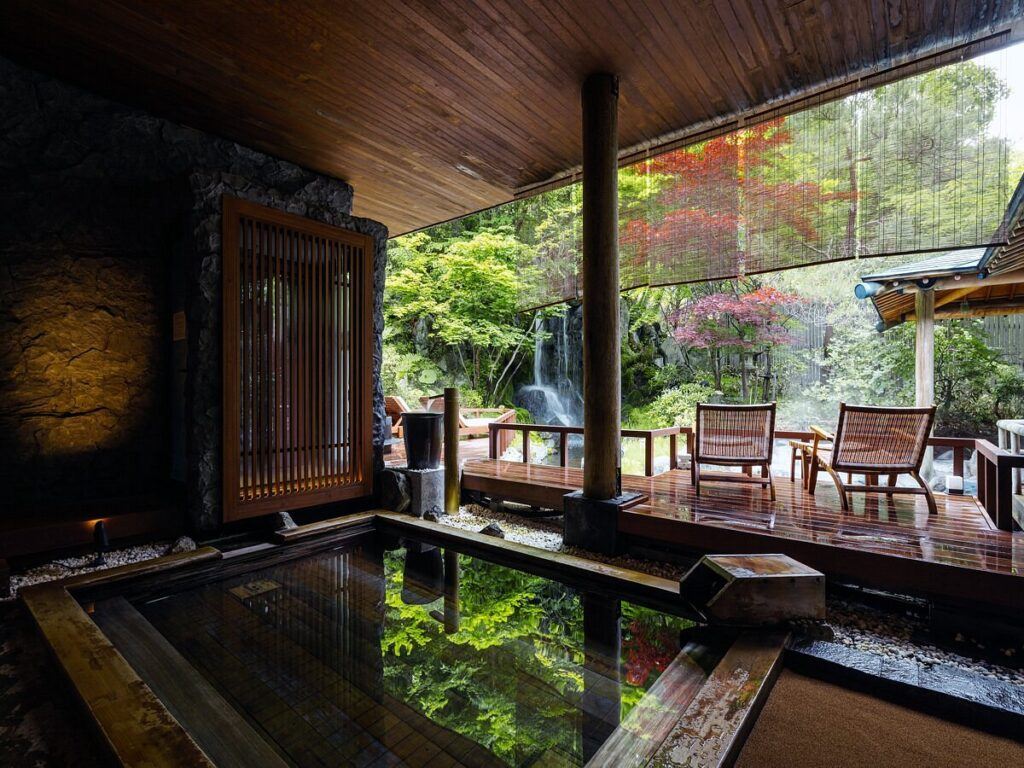
A stone’s throw from Daiichi Takimotokan, the Noboribetsu Grand Hotel offers a more intimate (but still historic) take on the town’s hot spring culture. Its claim to fame? A 100% sulfur-free spring, rare in Noboribetsu, perfect for those sensitive to strong mineral smells.
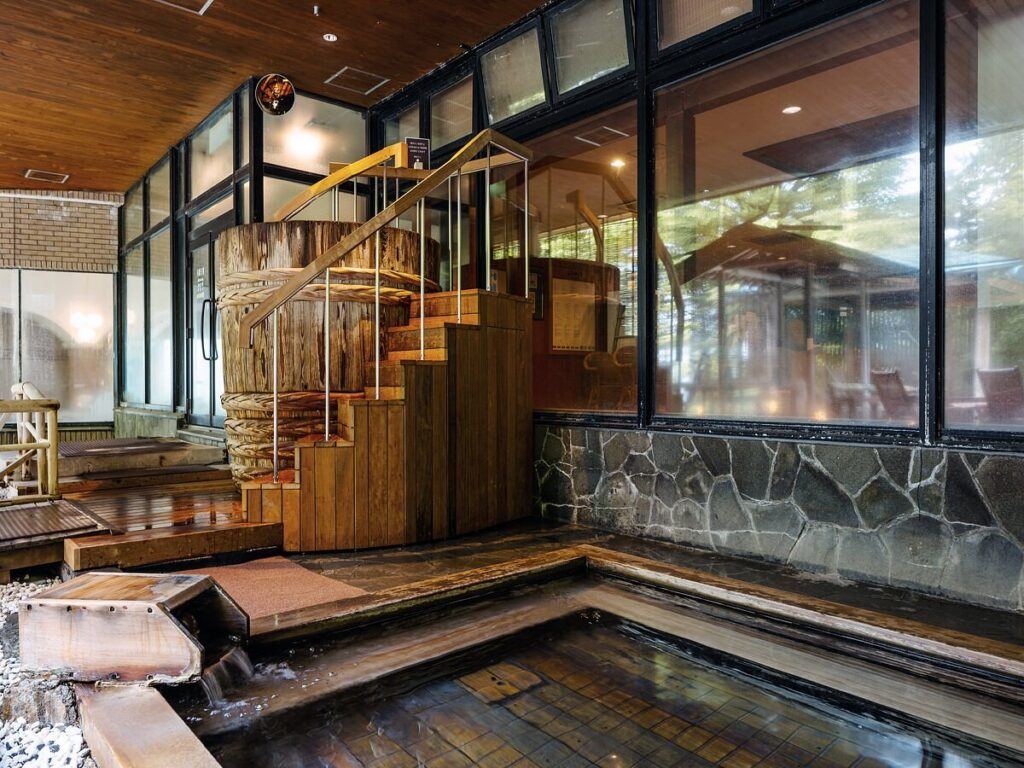
Why Stay Here?
- Unique Waters: The “Mizu no Yu” baths use sodium bicarbonate springs, leaving skin silky (no sulfur stench!).
- Family-Friendly: Spacious Japanese-Western hybrid rooms and a kids’ play area make it ideal for families.
- Festive Atmosphere: Evening taiko drum performances and a yukata rental corner add playful charm.
- Easy Exploring: Just 5 minutes to Jigokudani’s trails and the Bear Park.
Good to Know:
- The vibe is lively, not serene—avoid if you seek quiet.
- Dinner buffets (not kaiseki) cater to picky eaters.
Perfect For: Families and first-time ryokan-goers who want Noboribetsu’s buzz without intensity.
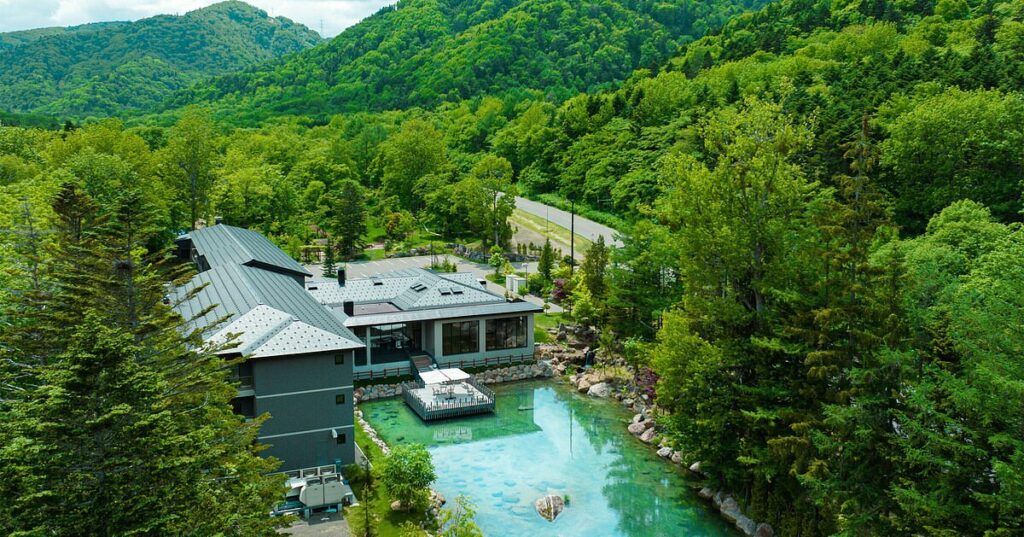
Who says you need mountains for a great onsen? Kasho Gyoen, tucked in Sapporo’s city center, proves urban ryokans can dazzle. Its glass-ceilinged baths let you soak under cherry blossoms or snowfall, while the Art Deco-meets-Japan lobby sets a glam tone.
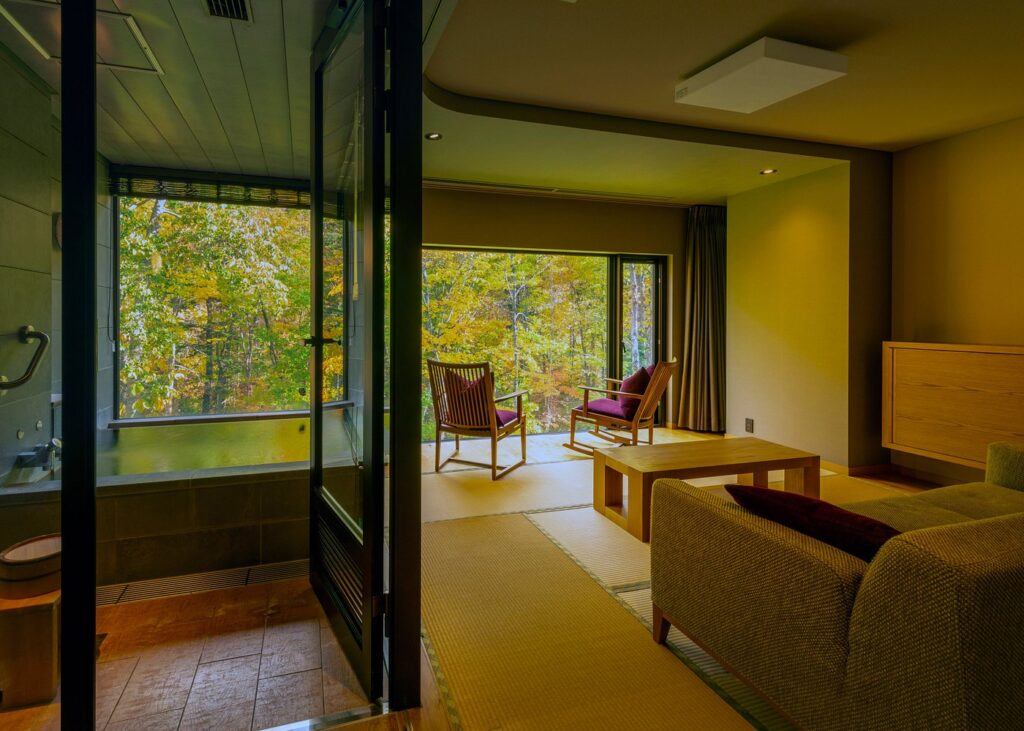
Why Stay Here?
- City-Meets-Serenity: The “Garden Bath” surrounds bathers with bamboo and trickling water features—a surreal contrast to Sapporo’s skyline.
- Creative Cuisine: Dinners fuse Hokkaido ingredients with French techniques (think: miso-marinated salmon with dashi foam).
- Sleek Rooms: Choose between tatami suites or rooms with deep cedar tubs and city views.
- Convenience: A 10-minute walk to Susukino’s nightlife or the Clock Tower.
Good to Know:
- The onsen is gender-segregated but not 24-hour.
- Book a “Cultural Room” for calligraphy sets and tea ceremony tools.
Perfect For: City slickers who want ryokan luxury without leaving Sapporo.
Love the art of Japanese dining? Complete your experience with the perfect pair of chopsticks—discover our guide to choosing authentic Japanese hash (chopsticks) for every occasion, from casual meals to kaiseki feasts!
Final Thoughts: Which Ryokan Speaks to You?
Hokkaido’s ryokans aren’t just accommodations—they’re cultural experiences wrapped in steam, seafood, and serenity. Whether you’re drawn to the volcanic drama of Noboribetsu, the forest seclusion of Jozankei, or the oceanfront calm of Hakodate, each stay promises a unique slice of Japanese tradition.
Pro Tips for Booking:
- Season Matters: Visit in autumn for fiery foliage or winter for snow-dusted onsens.
- Book Early: Especially for private onsen rooms or peak seasons.
- Try It All: Don’t skip the kaiseki meals—they’re culinary theater.
Language can throw a few curveballs your way, but worry not. Many top hotels cater to international guests with multi-language staff and helpful resources. Picking up a few phrases in Japanese can also add a fun twist to your stay. And a heads-up on safety—for peace of mind, find out if your hotel offers reliable transport options or shuttle services, especially during the snowy months. It’s always handy knowing you can get from sightseeing spot to souvenir shop without a hitch.
So, which ryokan will be your Hokkaido hideaway? Pack your yukata (cotton robe) and get ready to soak, savor, and unwind—Japanese style.
Ready to book? Share your dream ryokan in the comments below!
*Here’s a little transparency: Our website contains affiliate links. This means if you click and make a purchase, we may receive a small commission. Don’t worry, there’s no extra cost to you. It’s a simple way you can support our mission to bring you quality content.*
Thanks for the info. Have always wanted to try an Onsen. Do the different mineral type baths actually have a real impact on your body / mood etc. in your opinion? I’ve never really believed that kind of stuff. Thanks.
Great question Patrick! Some mineral benefits are actually scientifically proven, such as sulfur springs helping with muscle aches. However, I think it’s important to note how soaking in steaming water surrounded by nature just melts stress away! That said, my skin always feels amazingly soft after an iron-rich bath. So at worst, you get relaxation; at best, you might discover a new favorite therapy. 😊♨️
Hi. Do they have different temperatures in Onsens and do they have cold and hot ones?
Hi Allysa. Yes! Traditional Japanese onsens typically range from 38-42°C (100-108°F), but temperatures vary by spring source. While most onsens are hot, it is not uncommon to find cold ones too. Hotter onsens can be up to 45°C/113°F) for muscle relaxation, lukewarm ones are around 35-37°C/95-99°F for longer soaks, and cold onsens would be around 15-20°C/59-68°F and aim to boost circulation. I would look for signs like “熱め” (hotter) or “ぬるめ” (milder) as they are fairly common. Also, always test the water before entering! 🙂
These places look amazing. I know these are luxury places, but are there free Onsen’s where tourists can go and try them out? Thanks – Damien.
Great question, Damien! While luxury onsens often require reservations or fees, many towns have free public onsens (called ‘sento’ or ‘rotemburo’)—especially in hot spring regions like Hakone or Beppu. Just check local rules, as some may require small towels or ban tattoos. Hope you enjoy!
Hi. These are quite trendy and sort of high end options.
Are you aware of more family friendly options? Would love for my teenage kids to try them out but I’m not sure if this is more of an adult thing? Would be great to get your advice. Thank you.
Hi! That’s a great question. You’re right, these are on the luxury end, but onsen are definitely for everyone—including families with teens! Many family-friendly ryokans have private onsens you can book for just your family, which can be more comfortable. Some larger hotels also have gender-separated public baths where kids are welcome. I’d recommend looking for places with mixed-gender outdoor baths or private options, but it’s generally a fun and relaxing experience that I think teens would also love!
Thanks Cian. Will definitely do more research and checkout some of your suggestions.
Cian, this was such an inviting read. You managed to blend luxury, history, and culture so smoothly that it almost felt like taking a mini trip through Hokkaido from my screen. I could almost feel the steam and hear the quiet drip of water from those hot springs. The way you described each ryokan made it easy to imagine the atmosphere—from the grandeur of Noboribetsu to the quiet intimacy of Jozankei.
I’ve always wanted to visit an onsen but never really understood the difference between each region’s charm until now. Your guide didn’t just list hotels, it told stories, and that’s what made it special. I also liked how you included practical notes for travelers like me who might worry about language or booking seasons. Those details make the experience feel accessible, not just aspirational.
One question though, for a first-time visitor to Japan, would you recommend starting with a traditional countryside ryokan or an urban one like Kasho Gyoen? I imagine both would offer something unique, but I’d love your take on which gives the truest “first onsen” experience.
— John Monyjok Maluth
Hi John, thank you for such a thoughtful comment! I’m so glad the guide felt immersive and accessible.
For your first onsen experience, I’d highly recommend a traditional countryside ryokan. I think the deep immersion in nature and focus on tranquility provides the most authentic and magical introduction to the ritual. A place like Kasho Gyoen is wonderful as it blends tradition with modern luxury—perfect for a future trip to fall in love with the ryokan vibes!
Whichever you choose, I’m sure it will be unforgettable. Hope you get to experience it soon!
This was a great read. I’ve always been interested in ryokans and didn’t realize there were so many unique ones in Hokkaido. I like how you showed the difference between the larger, traditional ones and the smaller, more private retreats. The forest setting at Suizantei really caught my eye. A quiet soak in a private onsen sounds like the kind of break I need. Do you know if these ryokans usually include meals in the booking or is that something you have to request separately?
Thank you so much Marlinda, I’m really glad you enjoyed the guide! Suizantei’s forest setting is definitely special, I think it’s the perfect place for that quiet, restorative break you’re dreaming of.
To answer your question, yes, it’s a standard and wonderful part of the traditional ryokan experience that meals are almost always included in the booking. They are typically offered as a package plan known as “ichi-ju san-sai” (一汁三菜), which includes a lavish multi-course dinner and a full Japanese breakfast. This is a highlight for most guests! But of course make sure to check the specific hotel offering when booking! When you go to book, you’ll usually select a plan like “Dinner & Breakfast Included.” You can request any dietary restrictions in advance, and they are typically very accommodating.
I hope you get to experience it soon, it’s a magical experience!
What a beautifully written guide… it perfectly captures the spirit of Hokkaido’s culture! I’m especially intrigued by Jozankei Daiichi Hotel Suizantei — the idea of soaking in a private cedar bath surrounded by maple trees sounds magical.
Quick question… for someone visiting in winter, which of these ryokans offers the best combination of snowy scenery and easy accessibility (especially if traveling from Sapporo without renting a car)?
Hi Jenny, thank you so much for your kind words! I’m delighted to hear the guide captured the spirit of Hokkaido for you.
That’s an excellent question for a winter trip. For the ideal combination of breathtaking snowy scenery and easy accessibility from Sapporo without a car, I would highly recommend the Jozankei Daiichi Hotel Suizantei. It’s a direct and scenic bus ride from Sapporo (roughly 60-75 minutes), and the winter landscape there is really magical I’ve heard. It offers that perfect ryokan charm with the convenience you’re looking for. I hope this helps, and that you have an absolutely unforgettable onsen experience in Hokkaido!
I am not sure how true it is, but they say that natural hot springs are very healthy and rejuvenating for our bodies and souls. They also make wonderful tourist attractions as guests feel they can truly relax in these warm waters.
If I had to choose one of these resorts to stay in, I would definitely go for Jozankei Daiichi Hotel Suizantei. The views, Forrests and private cedar baths sound so relaxing. I also like that it doesn’t appear too crowded.
Do you know if food is included, or do they just offer self catering rooms?
Great choice Michel! I think the private cedar baths and serene forest views at Suizantei make it a perfect retreat for deep relaxation. To answer your question, yes – like most traditional luxury ryokans, breakfast and dinner are typically included in your stay, featuring exquisite multi-course kaiseki meals that highlight local Hokkaido ingredients. Self-catering rooms are quite uncommon at this level of hospitality, as the culinary experience is a central part of the ryokan journey. You can look forward to having your meals beautifully prepared for you, allowing you to fully immerse yourself in the tranquil onsen experience. But of course, you may need to check the specific hotel offerings just in case! Happy travels 🙂
Loved this roundup, it is exactly the blend of ryokan charm and modern comfort I look for in Hokkaido. I am especially curious about rooms with private rotenburo and how each property handles kaiseki dinners for dietary needs. Which of these is most first-time friendly for English speakers with clear tattoo policies, and which has the smoothest access to slopes or winter activities without a car?
Marios
Hi Marios, thank you for your kind comment! Based on your needs, I would recommend Noboribetsu Grand Hotel. It is the most first-time and English-speaker friendly among the listed options, with relatively clear tattoo policies (please confirm directly when booking). It also offers excellent access to winter activities, as it’s located right in the famous Hell Valley, with snowshoeing and park walks just steps away, no car needed. For rooms with private rotenburo, both Jozankei Daiichi Hotel Suizantei and Kasho Gyoen offer beautiful options. All these traditional hotels can accommodate dietary needs for their kaiseki dinners if you notify them well in advance. Hope this helps you plan a wonderful trip!